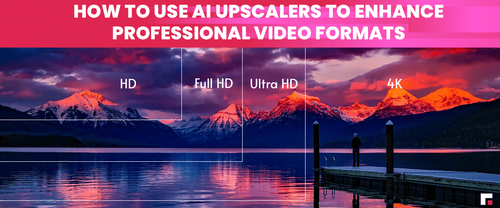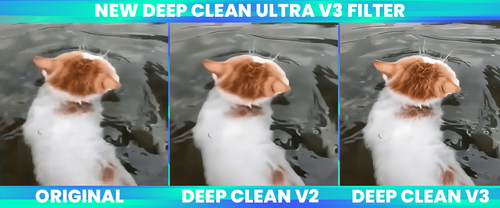Artificial Intelligence (AI) has emerged as a game-changer in the landscape of video production, particularly when it comes to video enhancement and upscaling. While the technology promises improvements in quality and efficiency, many video professionals remain cautious about its adoption. Here we want to go through all you need to know by learning about its key concepts, limitations, advancements, and practical applications to help you make informed decisions about integrating AI upscalers into your workflows.
Key concepts in AI video enhancement and upscaling
At its core, AI video enhancement and upscaling involve using machine learning algorithms to improve video quality by increasing resolution, reducing noise, and enhancing details. Unlike traditional methods that rely on interpolation techniques, AI approaches employ neural networks trained on vast datasets to predict and generate high-resolution images from low-resolution inputs.
- Neural Networks and Machine Learning: These are computational models inspired by the human brain's structure, capable of recognizing patterns and making predictions. In video enhancement, neural networks learn the relationship between low-resolution and high-resolution images.
- Super-Resolution Techniques: Super-resolution refers to the process of reconstructing a high-resolution image from one or multiple low-resolution images. AI-powered super-resolution uses deep learning models to add plausible details that weren't present in the original footage.
Understanding these concepts is crucial for appreciating how AI video enhancer differentiates from traditional enhancement methods. While conventional techniques might simply stretch an image and fill in pixels based on nearby values, AI can predict what the additional pixels should be, leading to sharper and more detailed results.
Understanding the current boundaries of AI upscaling
Despite its potential, AI video enhancement and upscaling is not without limitations. Being aware of these challenges is essential for setting realistic expectations and avoiding potential pitfalls.
- Artifacts and inconsistencies: AI video enhancer can sometimes introduce visual artifacts, such as unnatural textures or halo effects around edges. These artifacts arise because the AI is making educated guesses, which might not always align with the original content's intent.
- Processing time and computational Resources: High-quality AI video enhancement is computationally intensive. Processing even a few minutes of footage can take hours on standard hardware, necessitating high-end GPUs or cloud-based solutions, which can be costly.
- Overfitting issues: It usually happens when AI models are trained on specific datasets might not perform well on content that differs significantly from their training data.
- **Ethical and creative concerns: **Relying on AI to add details can blur the line between restoration and alteration. This raises questions about the authenticity of the enhanced footage, and concerns about copyright claims where tools such as TensorPix are resolute about it.
Integrating AI upscaling into professional workflows
For video professionals, film studios or professional content creators considering AI video enhancement, understanding practical applications and best practices is key to successful integration
- Restoration of legacy footage: AI video quality enhancer can breathe new life into old or degraded footage by enhancing resolution and repairing damage, making it invaluable for archival projects and remastering classics.
- Content for hi-res displays: With the proliferation of 4K and 8K displays, there's increasing demand for high-resolution content. AI upscaling allows existing HD footage to meet these new standards without reshooting.
- Cost and time efficiency: For projects with tight budgets or timelines, AI upscaling can reduce the need for reshoots or manual enhancement, freeing up usually limited resources for other aspects of production.
Conclusion
AI video quality enhancers hold significant promise for transforming post-production and restoration processes. While the technology presents challenges, learning everything you need to know about its capabilities and limitations allows video professionals to make thoughtful decisions about adopting AI upscalers in their workflows.





